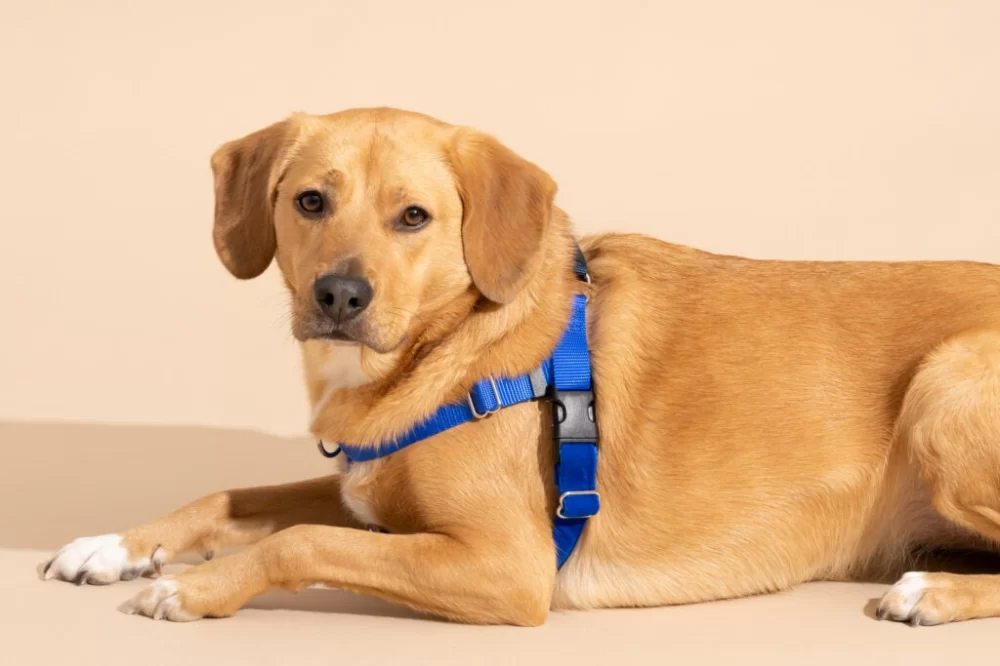- Understanding the Importance of the Right Harness
- Key Features to Look for in Training Harnesses
- Top Harness Types for Puppies and Active Dogs
- Real-Life Experience with Harness Training
- Professional Tips for Harness Use and Care
1. Understanding the Importance of the Right Harness
Choosing the best dog harnesses for training puppies and active dogs is crucial not only for safety but also for effective behavior management. Unlike collars, harnesses distribute pressure more evenly across your dog's body, reducing the risk of injury to the neck and throat. This is particularly important when training young puppies whose bones and joints are still developing.
For active dogs, a well-designed harness provides better control and can prevent unwanted pulling or lunging during walks and training sessions. By investing in a quality harness, you support both your dog’s comfort and your ability to guide them confidently.
1.1 Why Harnesses Outperform Collars in Training
Many dog trainers recommend harnesses over collars because they offer a safer way to manage strong or energetic dogs. When used correctly, harnesses reduce the risk of choking and allow owners to steer their dogs without harsh corrections. This can improve training outcomes and strengthen the bond between owner and pet.
1.2 The Impact on Puppy Development
Puppies are naturally curious and energetic, and the wrong equipment can easily cause discomfort or injury. A harness designed specifically for puppies considers their smaller size and growing body structure. This helps ensure that training remains a positive experience during these formative months.
2. Key Features to Look for in Training Harnesses
Not all harnesses are created equal. When searching for the best dog harnesses for training puppies and active dogs, focus on these essential features to maximize effectiveness and comfort.
2.1 Adjustable Fit and Comfort
An adjustable harness allows you to customize the fit as your puppy grows or as your dog’s body changes through exercise and age. Look for harnesses with multiple adjustment points to avoid rubbing, chafing, or restriction of movement.
2.2 Durable, Lightweight Materials
Strong but lightweight materials ensure your dog can move freely without feeling weighed down. Breathable fabrics help prevent overheating, especially during active play or training sessions outdoors.
2.3 Multiple Attachment Points for Versatility
Harnesses with front and back leash attachments offer more control options. The front clip helps discourage pulling, while the back clip is ideal for relaxed walks. Some training harnesses even include reflective elements for safety during evening walks.
2.4 Easy to Put On and Take Off
Ease of use matters a lot for busy owners. Quick-release buckles and intuitive designs can save time and reduce stress for both you and your dog.
3. Top Harness Types for Puppies and Active Dogs
Understanding the types of harnesses available can guide you to the best choice for your dog’s specific needs and personality.
3.1 Step-In Harnesses for Puppies
Step-in harnesses are popular for puppies because they are simple to use and minimize fumbling. These harnesses gently wrap around the dog’s chest and shoulders, making them comfortable and secure.
3.2 No-Pull Harnesses for Active and Strong Dogs
No-pull harnesses feature front leash attachments designed to reduce pulling by redirecting the dog’s motion. These are particularly useful for active dogs that get easily excited or reactive on walks.
3.3 Padded Harnesses for Extra Comfort
Padded harnesses provide additional cushioning to sensitive areas, making them ideal for dogs with thin coats or skin sensitivities. They are also helpful during longer training or walking sessions.
3.4 Harnesses with Handle for Extra Control
Some harnesses come with a handle on the back, giving owners an immediate way to gain extra control when needed—such as in crowded areas or during training exercises.
4. Real-Life Experience with Harness Training
Jessica, a dog owner from Ohio, shares her story of training her lively Labrador puppy using a no-pull harness recommended by professionals. Initially, her puppy pulled strongly, making walks challenging and stressful. By switching to a harness designed to discourage pulling and combining it with consistent training commands, Jessica noticed a remarkable improvement within a few weeks.
Jessica emphasizes how the harness helped keep her puppy safe and comfortable, allowing her to enjoy walks again. This example highlights how choosing the right harness can transform both training and daily activities.
5. Professional Tips for Harness Use and Care
Veterinarians and trainers agree that proper harness fit and maintenance are key to long-term success. Here are some expert recommendations:
5.1 Regularly Check Fit and Adjust
As your puppy grows or your dog’s weight fluctuates, regularly adjust the harness to maintain comfort and effectiveness. An ill-fitting harness can cause rubbing or escape risks.
5.2 Inspect for Wear and Tear
Check buckles, straps, and stitching often. Replace the harness if any parts show damage to avoid accidents during walks or training.
5.3 Introduce the Harness Positively
Make the harness a fun and rewarding experience by using treats and praise when putting it on. This helps your dog associate the harness with positive feelings.
For those looking to find the best dog harnesses for training puppies and active dogs, Hidden Brook Veterinary offers a carefully curated selection of harnesses and professional advice tailored to your dog’s unique needs. Their experts can guide you toward the perfect fit and style, ensuring your dog stays comfortable, safe, and motivated during training.












